Understanding light bulb temperature is key to selecting the right lighting for ambiance‚ functionality‚ and energy efficiency. This guide explores color temperature basics and practical applications.
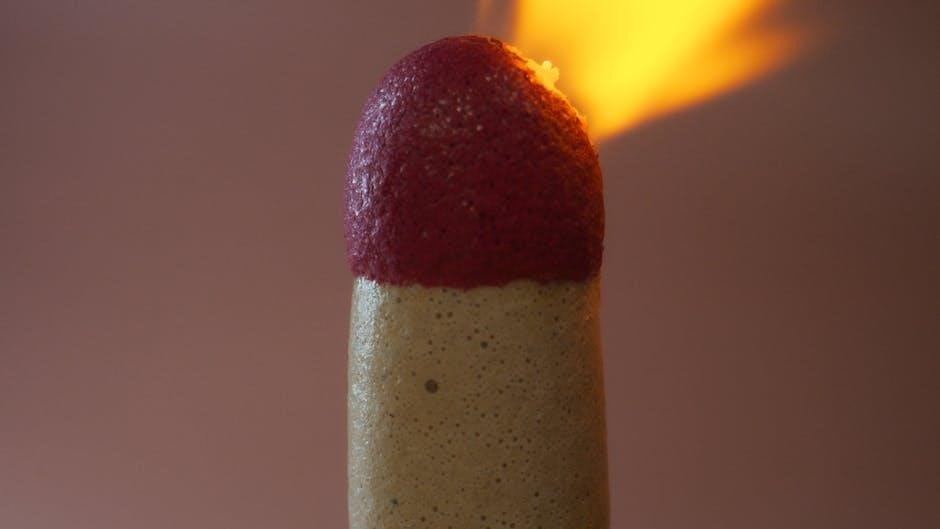
Understanding Color Temperature and Its Importance
Color temperature‚ measured in Kelvin (K)‚ determines the light’s warmth or coolness. Lower Kelvin values (2700K-3000K) produce warm‚ yellowish tones‚ while higher values (5000K-6500K) emit cool‚ bluish light. This spectrum affects ambiance‚ task efficiency‚ and mood. Warm lighting creates cozy spaces‚ ideal for relaxation‚ whereas cool tones enhance focus and brightness‚ suitable for work areas. Understanding color temperature helps in selecting bulbs that align with desired aesthetics and functionality‚ ensuring optimal lighting for various environments and activities.
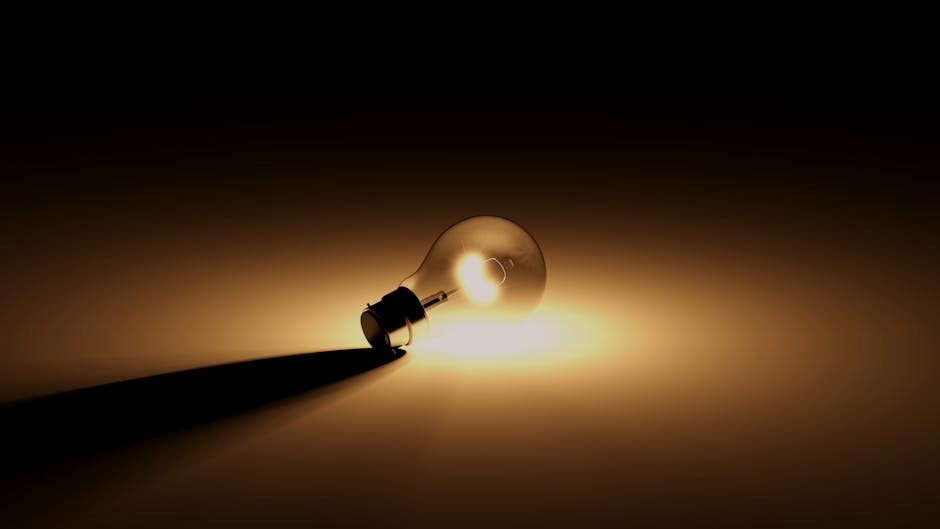
What is Color Temperature?
Color temperature‚ measured in Kelvin (K)‚ describes the light’s color appearance‚ ranging from warm yellow (low K) to cool blue (high K)‚ guiding lighting choices for desired moods.
Definition and Measurement in Kelvin (K)
Color temperature‚ measured in Kelvin (K)‚ defines the light’s hue‚ from warm yellow (2700K-3000K) to cool blue (5000K-6500K). Lower Kelvin values produce warmer tones‚ while higher values create cooler‚ bluer light. This scale helps users choose lighting that matches their desired ambiance and functionality‚ with LED bulbs offering precise control over color temperature for optimal illumination.
Warm White vs. Cool White Lighting
Warm white lighting (2700K-3000K) creates a cozy‚ relaxing atmosphere‚ ideal for living rooms and bedrooms. Cool white lighting (4100K-5000K) emits a bright‚ energizing glow‚ perfect for task-oriented spaces like kitchens or offices. The choice between warm and cool white depends on the room’s purpose and desired mood‚ with each offering distinct benefits for functionality and aesthetics.
Types of Light Bulb Color Temperatures
Color temperatures range from 2700K to 6500K‚ offering Warm White‚ Soft White‚ Bright White‚ Cool White‚ and Daylight options‚ each providing distinct ambiance and functionality.
Warm White (2700K-3000K)
Warm White bulbs‚ ranging from 2700K to 3000K‚ emit a soft‚ yellowish glow. This cozy light mimics traditional incandescent bulbs‚ creating a relaxing atmosphere. Ideal for living rooms‚ bedrooms‚ and dining areas‚ Warm White lighting enhances warm tones in wood and fabric‚ promoting comfort and tranquility. It’s perfect for spaces where a soothing ambiance is desired‚ making it a popular choice for residential settings.
Soft White (3000K-3500K)
Soft White bulbs‚ ranging from 3000K to 3500K‚ offer a slightly brighter and cooler tone than Warm White while maintaining a warm‚ inviting ambiance. This range is ideal for kitchens‚ bathrooms‚ and task lighting‚ as it provides a neutral yet comfortable glow. Soft White is a versatile choice‚ blending functionality with a relaxing atmosphere‚ making it suitable for everyday use in various residential and commercial spaces.
Bright White (3500K-4100K)
Bright White (3500K-4100K) offers a crisp‚ energizing light ideal for task-oriented spaces. Perfect for workspaces‚ reading areas‚ and commercial settings‚ it enhances clarity and focus. Its neutral tone bridges Soft White and Cool White‚ providing ample brightness without harshness. Suitable for environments requiring productivity and attention to detail‚ Bright White is a balanced choice that boosts energy and efficiency while maintaining a pleasant ambiance.
Cool White (4100K-5000K)
Cool White (4100K-5000K) emits a crisp‚ neutral light‚ aligning between daylight and bright white. Ideal for task lighting in kitchens‚ offices‚ and workspaces‚ it enhances clarity and reduces eye strain. This temperature range creates a focused‚ productive environment‚ making it suitable for areas requiring attention to detail. Cool White is brighter than Bright White but not as harsh as Daylight‚ offering a balanced yet energizing illumination perfect for both task and ambient lighting needs.
Daylight (5000K-6500K)
Daylight (5000K-6500K) mimics natural outdoor light‚ offering a crisp‚ invigorating glow. Ideal for reading‚ task lighting‚ and display cases‚ it enhances color accuracy and reduces eye strain. Often used in professional settings‚ it boosts alertness and energy. While too harsh for ambient spaces‚ Daylight bulbs are perfect for areas requiring precision and clarity‚ making them a popular choice for workshops‚ studios‚ and outdoor lighting solutions that demand vibrant‚ natural illumination.
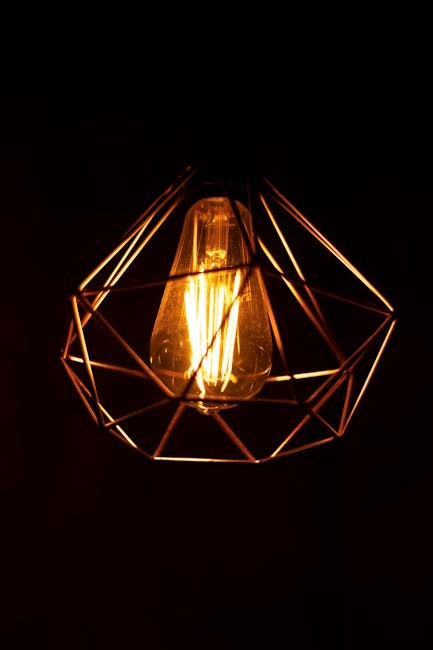
How to Choose the Right Color Temperature
Selecting the right color temperature involves assessing the room’s purpose and desired mood. Match bulb temperature to room type and task-specific needs for optimal lighting experiences.
Matching Bulb Temperature to Room Type
Choose bulb temperature based on room function and desired ambiance. Warm white (2700K-3000K) suits bedrooms and living areas for cozy relaxation. Soft white (3000K-3500K) works well in kitchens and dining spaces for a balanced feel. Cool white (4100K-5000K) is ideal for task-oriented areas like bathrooms or home offices‚ while daylight (5000K-6500K) enhances reading and task-specific lighting needs. Selecting the right temperature ensures optimal lighting for comfort and functionality.
- Bedrooms: Warm white for relaxation.
- Kitchens: Soft white for balanced lighting.
- Bathrooms: Cool white for clarity.
- Home offices: Daylight for focus.
Task-Specific Lighting Needs
Lighting needs vary by task‚ requiring specific color temperatures for optimal performance. Cool white (4100K-5000K) enhances focus for tasks like reading or cooking‚ providing crisp‚ clear light. Bright white (3500K-4100K) is ideal for general tasks‚ while daylight (5000K-6500K) mimics natural light‚ reducing eye strain. Warm white (2700K-3000K) creates a relaxing ambiance for leisurely activities. Choosing the right temperature ensures efficiency and comfort for specific tasks‚ improving productivity and visual comfort.
- Reading: Cool white for clarity.
- Cooking: Bright white for detail.
- Leisure: Warm white for relaxation.
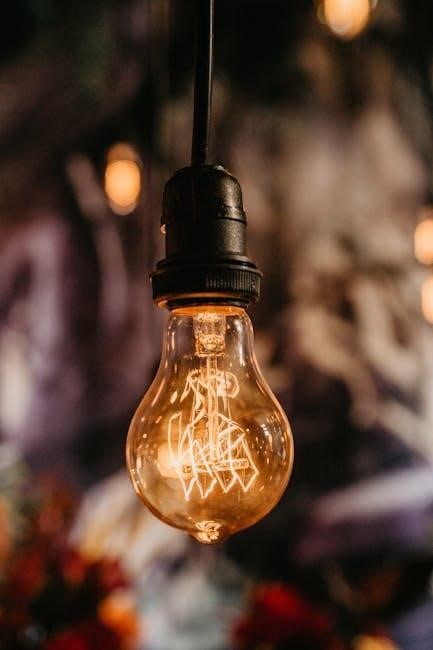
Measuring and Understanding Light Bulb Temperature
Light bulb temperature is measured in Kelvin (K)‚ with Correlated Color Temperature (CCT) indicating the hue and tone of white light emitted‚ while Color Rendering Index (CRI) assesses color accuracy.
Correlated Color Temperature (CCT)
Correlated Color Temperature (CCT) measures the hue of light emitted by a bulb‚ expressed in Kelvin (K). Lower CCT values (2700K-3000K) produce warm‚ yellowish tones‚ while higher values (5000K-6500K) emit cool‚ bluish light. CCT helps determine the ambiance of a space‚ with warm tones creating cozy environments and cool tones enhancing focus. Understanding CCT ensures optimal lighting choices for specific tasks and moods‚ balancing functionality and aesthetics effectively. This metric is essential for selecting bulbs that align with desired lighting outcomes.
Color Rendering Index (CRI)
The Color Rendering Index (CRI) measures a light bulb’s ability to accurately display colors compared to natural daylight. Rated on a scale from 0 to 100‚ higher CRI values indicate better color reproduction; A CRI of 80-100 is considered excellent for tasks requiring color accuracy‚ while lower values may distort colors. CRI is crucial for environments like kitchens or reading areas‚ where true color representation is essential. It complements CCT by ensuring vibrant and realistic color portrayal‚ enhancing overall lighting quality and visual comfort.

Energy Efficiency and Temperature
Energy efficiency and temperature are closely linked‚ with LED bulbs offering high efficiency across color temperatures. Lower Kelvin ratings often consume more energy‚ while higher ratings may appear cooler but use less power‚ optimizing brightness and energy consumption.
LED Bulbs and Their Temperature Options
LED bulbs are highly versatile‚ offering a wide range of color temperatures from warm white (2700K-3000K) to cool daylight (5000K-6500K). They provide consistent light quality and energy efficiency across all temperatures. Unlike traditional bulbs‚ LEDs maintain their color temperature even as they dim‚ ensuring a stable lighting experience. This adaptability makes LEDs ideal for various applications‚ from ambient home lighting to task-oriented workspaces. Additionally‚ their long lifespan and low energy consumption make them a sustainable choice for modern lighting needs.
Wattage vs. Lumens: Understanding Brightness
Wattage measures energy consumption‚ while lumens indicate actual brightness. Traditional bulbs use wattage to denote brightness‚ but lumens are the accurate measure. For example‚ a 60W incandescent bulb is equivalent to an 800-lumen LED. When choosing bulbs‚ focus on lumens for brightness and wattage for energy efficiency. LEDs often use fewer watts to produce the same lumens‚ making them more energy-efficient. This understanding helps balance lighting needs with energy savings‚ especially for LED options.
Practical Applications of Light Bulb Temperature
Light bulb temperature impacts ambiance‚ task efficiency‚ and energy consumption‚ aiding in selecting appropriate lighting for various spaces like homes‚ offices‚ and outdoors.
Creating Ambient Lighting for Different Spaces
Color temperature plays a crucial role in setting the mood and functionality of various spaces. Warm white bulbs (2700K-3000K) create cozy‚ relaxing environments ideal for living rooms and bedrooms. Soft white (3000K-3500K) suits kitchens and dining areas‚ offering a balanced glow. Bright white (3500K-4100K) enhances task-focused spaces like home offices‚ while cool white (4100K-5000K) and daylight (5000K-6500K) are perfect for bathrooms‚ reading areas‚ or outdoor lighting. By selecting the right color temperature‚ you can tailor lighting to match the desired ambiance and purpose of each room. LED bulbs and smart lighting options further allow for adjustable solutions to meet specific needs.
Impact of Lighting on Mood and Productivity
Lighting significantly influences mood and productivity‚ with color temperature playing a key role. Warm white bulbs (2700K-3000K) create a relaxing‚ calming atmosphere‚ ideal for living spaces‚ while cool white (4100K-5000K) and daylight (5000K-6500K) enhance focus and alertness‚ making them suitable for workspaces. Proper lighting can boost energy levels‚ improve concentration‚ and reduce eye strain‚ contributing to overall well-being and efficiency in both residential and professional environments.
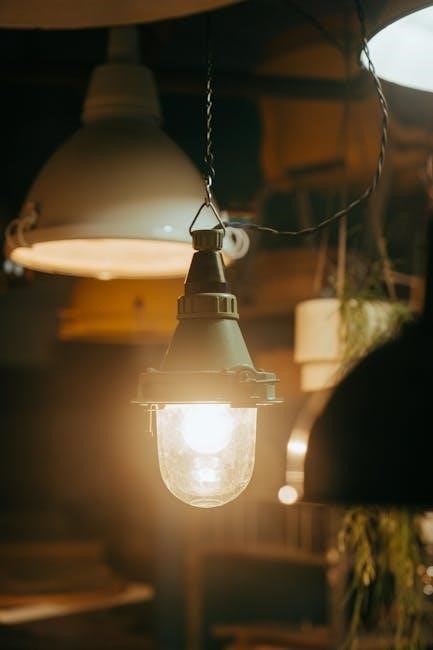
Future Trends in Light Bulb Temperature Technology
Future trends include smart bulbs with adjustable color temperatures and energy-saving innovations‚ enhancing lighting personalization and sustainability for modern spaces and eco-conscious consumers.
Smart Bulbs and Adjustable Color Temperature
Smart bulbs revolutionize lighting by offering adjustable color temperatures‚ allowing users to tailor ambiance and functionality. Controlled via apps or voice assistants‚ these bulbs enable seamless transitions between warm and cool tones. Energy-efficient LED technology supports dynamic color shifts while maintaining optimal brightness. Adjustable color temperature enhances mood‚ productivity‚ and aesthetics‚ making smart bulbs a cutting-edge solution for modern living spaces. Their versatility and convenience are driving innovation in lighting technology.
Sustainability and Energy-Saving Innovations
Energy-efficient lighting innovations are transforming the industry‚ focusing on sustainability and reduced power consumption. LED bulbs‚ with their long lifespan and low energy use‚ lead the way. Smart technologies integrate with bulbs to optimize energy use through automated schedules and dimming. These advancements not only lower utility bills but also minimize environmental impact. As technology evolves‚ energy-saving solutions continue to enhance lighting quality while promoting eco-friendly practices‚ making sustainable lighting accessible and practical for all.
